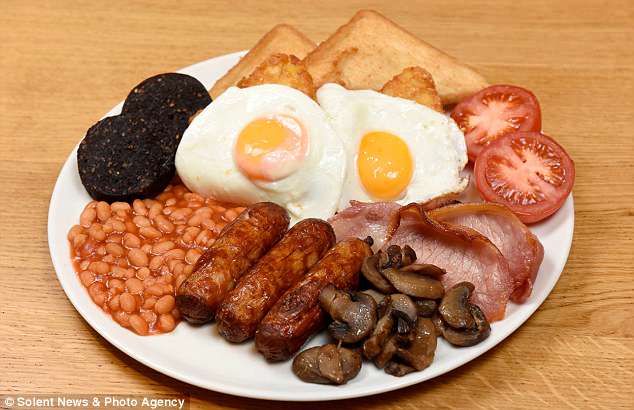I’ve been able to forgive Gordon Ramsay for much because, when criticizing a trainee chef’s work, he is alleged to have uttered the immortal words, “You burned that fucking dish so black it went out and stole my bicycle!” (I don’t care if he said it or not, actually; all I know is when I read the story I nearly passed out from laughing so hard.)
Now Chef Gordon has uttered some more immortal words, as part of a another story:
“That’s when I knew Americans knew fuck all about good food. Right there and then.”
Before we get our backs up and start muttering about “Spotted Dick” and “Toad In The Hole” (British ahem delicacies both), not to mention a storied national tradition of boiling food to cook it, Our Gordon has a point. How else can one explain such excrescences as the Big Mac, Cincinnati chili (don’t even ask me), light beer, and concepts such as drive-through windows at “fast food” outlets?
I’m not being a food snob, really. I hate the whole concept of “fast food” (as I’ve stated innumerable times in the past) for the simple reason that one absolutely cannot create good food when speed of delivery is the sine qua non of the thing. And once again, let’s not talk about how little room the Brits have to talk; this is about us, we Americans.
I have to think that we treat food in the same way as we treat most problems: we’re hungry, so we eat: problem solved. What we eat doesn’t really matter, because practically anything will do to assuage hunger — and besides, we Murkins are a busy people and we need to take care of our hunger right now — unlike for example, the indolent Europeans, for whom a lunch “hour” is, in the immortal words of Pirate Captain Barbossa, “just a guideline”.
The problem is that when we’re prepared to eat just any old shit under those circumstances, our standards become so atrophied that (and I swear this was once said to me, in total earnestness) places like Applebee’s, Red Lobster or Olive Garden become perfectly acceptable choices for dining out when we aren’t in a hurry. And they shouldn’t be, because they serve absolute crap — at best it’s mediocre, and usually, it’s unimaginative and boring food prepared to suit palates accustomed to the boring and unimaginative.
Once again, please remember that I’m no food snob: I can’t be, not when I enjoy junk food like sausage rolls, fish & chips and similar fare. But I do understand the concept of proper dining as opposed to just eating, and I think that’s what Ramsay was alluding to. If you read his story above, it concerns how his lunch guest was prepared to take out her Caesar salad to eat later, even though, as he correctly pointed out, it would taste like shit because it had already been dressed (and un-refrigerated Caesar salad dressing goes off faster than a Kardashian’s underwear). She was prepared to eat terrible-tasting food just for the sake of eating something — and I think that’s something that lamentably, we Americans are often guilty of.
Also again: I’m not suggesting that we should make a fetish of our food like, say, the French do; but I do believe that we need to become more discriminating in our approach to food because otherwise we will continue to fall prey to the purveyors of the mediocre. And that’s a Bad Thing.
Let me illustrate this with a personal anecdote, for a change. I remember going grocery shopping with the Son&Heir when he was still just a boy of about fourteen. We walked around the store picking out foods we’d like, and I noticed that he wasn’t buying ordinary cheese but really good stuff, whether imported or the better Wisconsin fare (we were living in Chicago at the time). Ditto bread: no Wonder Bread, but loaves from the store’s bakery. On and on we went, until I pointed out how much I appreciated his choices. His reply was immediate: “Why should anyone buy shit food when good food is only a few pennies more?” (I should also point out that as a weenie, he’d lived off canned Vienna sausage and Kraft Mac O’Cheese like so many kids do. But living with me, he’d become accustomed to having only good food in the house, and his tastes had adjusted accordingly.)
So I guess my point is this. We don’t have to settle for the ordinary. Yeah, sometimes the extraordinary may cost a little more, but in the grand scheme of things, “good enough” just can’t compete with “great”.
And as my old Dad used to say: “Long after you’ve forgotten how much you paid for it, you’ll still be enjoying it.” In the case of food, you’ll remember the fine meals forever, while the ordinary meals will be long forgotten.
Besides, I’d love us to start proving that smug little British turd wrong.






